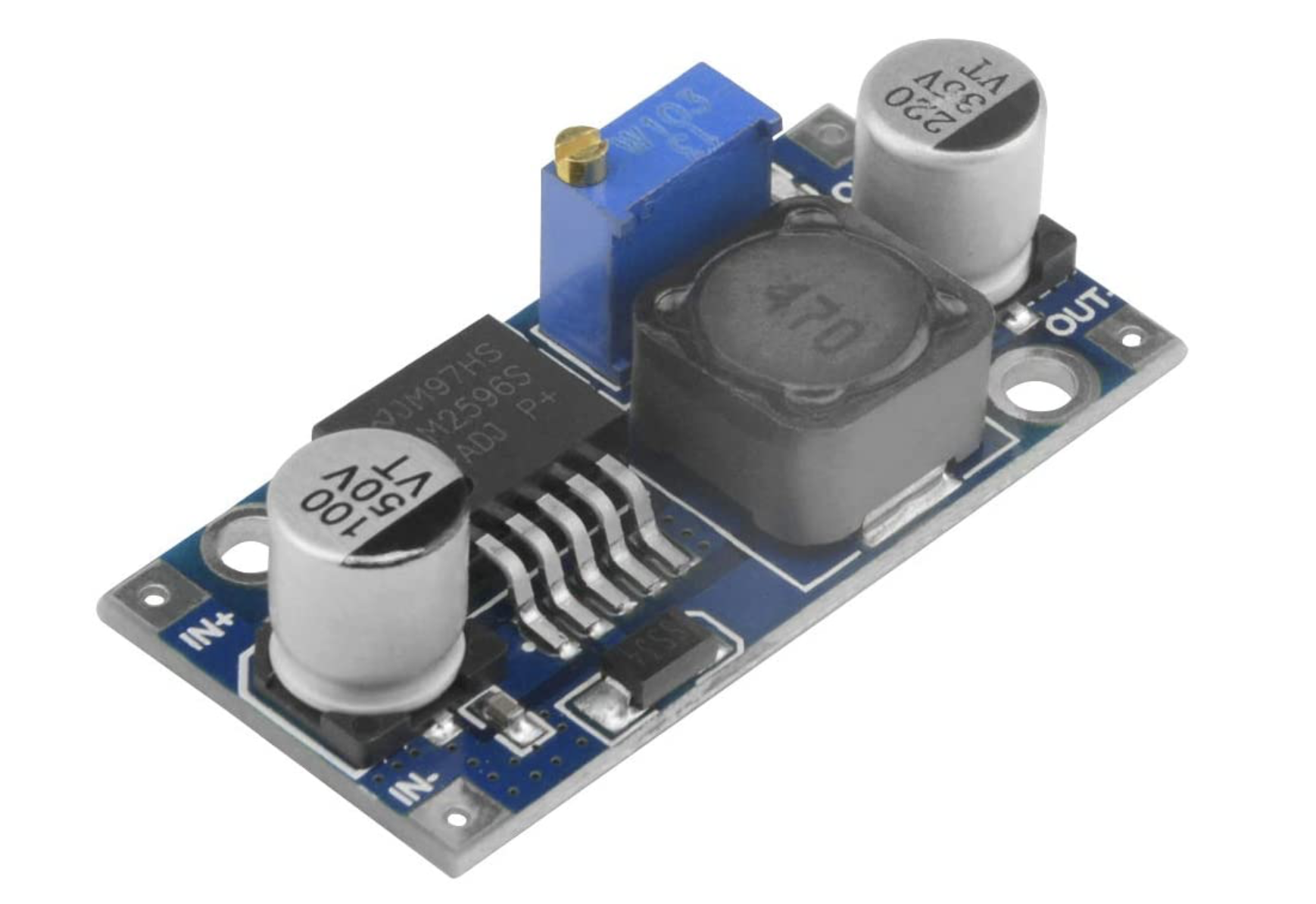...
| Specification | Value |
|---|---|
| Charging voltage | 12.6V |
| Maximum output current | 20A |
| Maximum output power / charging power | 252W |
| Low Voltage Disconnect | 9V or 3V/cell |
| Size | 59 x 20 x 3.4mm |
Buck Converter
Specifications
| Module property | Non-isolated buck module |
|---|---|
| Input voltage | 3.2-40V (try not to exceed 38V as input) |
| Output voltage | 1.25-35V continuously adjustable |
| Output current | 0-3A |
| Working temperature | -40~+85 degrees |
| Working frequency | 180KHz |
| Conversion efficiency | up to 92% (efficiency related to input, output voltage, current, voltage difference) |
| Switching frequency | 65KHz |
| Output ripple | <30mV |
| Short circuit protection | Limited current 8A |
| Over temperature protection | Automatically turn off the output after over temperature |
| Input reverse connection protection | None, (If necessary, please input a large current diode in the input string) |
Question: Can we safely charge this with our 14.6v 20A Charger?
...
Perhaps we can add a voltage regulator with the output set to about 12v12.6v ?
Observation:
With the Buck Converter set to 12.2v with an input of 12.2v, the output as 11.5v.
Not ideal but not necessarily a deal breaker. When using the supplied AC/DC wall plug (output=12.2v), the buck converter outputs about 11.5v. This is above the nominal voltage which should still charge the battery.
When charging from a vehicle or RV, this should not be an issue since the voltage is typically higher than 12.6v. We might think about replacing the wall ACDC plug with one that outputs about 14v or higher at 3A.
Installation
So, we added a buck converter to the input which drops the voltage to 12.6v to charge the battery and power the speaker. This buck module was simply hot glued to to the bottom of the board.
...
